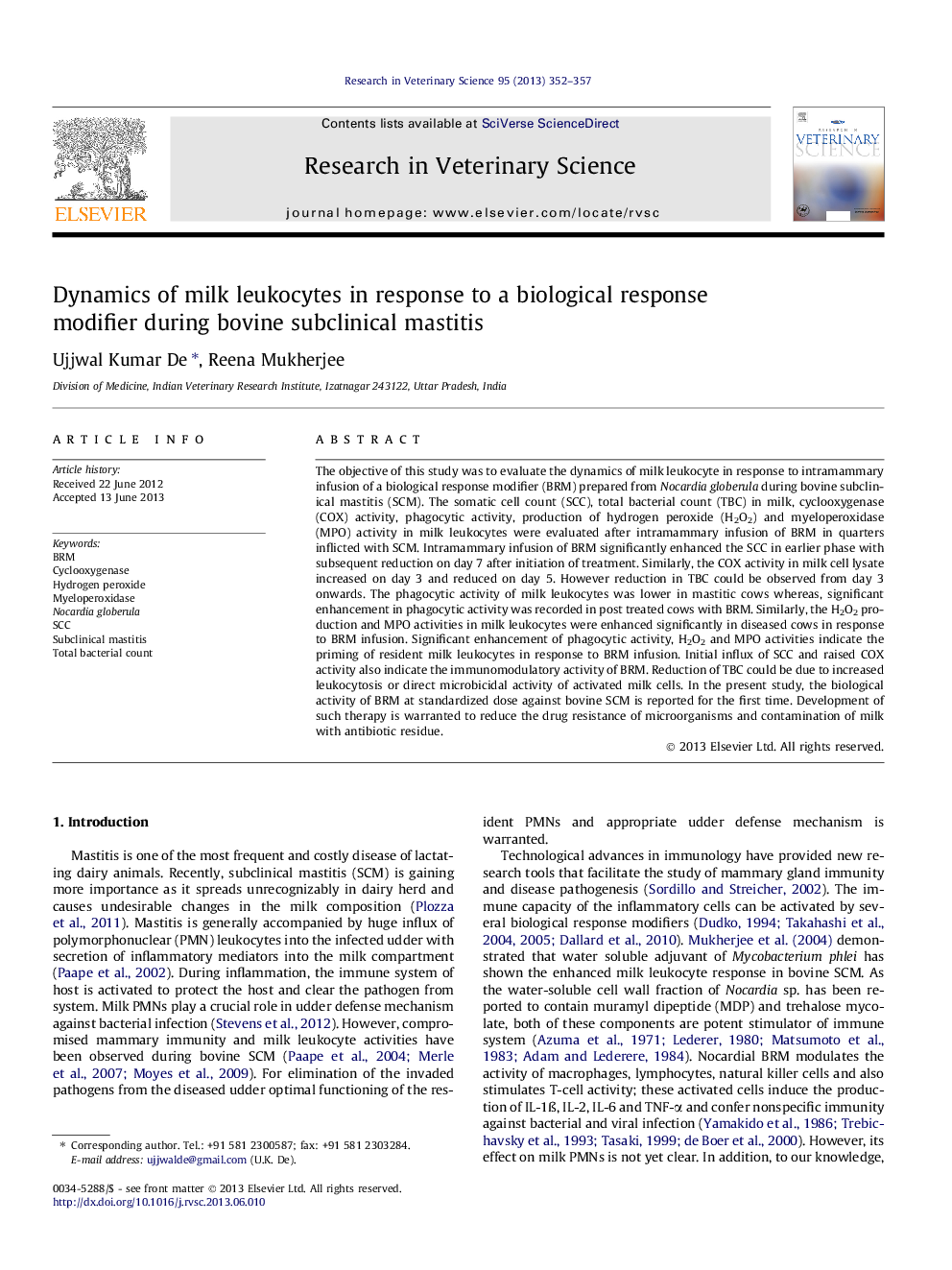| Article ID | Journal | Published Year | Pages | File Type |
|---|---|---|---|---|
| 2455079 | Research in Veterinary Science | 2013 | 6 Pages |
The objective of this study was to evaluate the dynamics of milk leukocyte in response to intramammary infusion of a biological response modifier (BRM) prepared from Nocardia globerula during bovine subclinical mastitis (SCM). The somatic cell count (SCC), total bacterial count (TBC) in milk, cyclooxygenase (COX) activity, phagocytic activity, production of hydrogen peroxide (H2O2) and myeloperoxidase (MPO) activity in milk leukocytes were evaluated after intramammary infusion of BRM in quarters inflicted with SCM. Intramammary infusion of BRM significantly enhanced the SCC in earlier phase with subsequent reduction on day 7 after initiation of treatment. Similarly, the COX activity in milk cell lysate increased on day 3 and reduced on day 5. However reduction in TBC could be observed from day 3 onwards. The phagocytic activity of milk leukocytes was lower in mastitic cows whereas, significant enhancement in phagocytic activity was recorded in post treated cows with BRM. Similarly, the H2O2 production and MPO activities in milk leukocytes were enhanced significantly in diseased cows in response to BRM infusion. Significant enhancement of phagocytic activity, H2O2 and MPO activities indicate the priming of resident milk leukocytes in response to BRM infusion. Initial influx of SCC and raised COX activity also indicate the immunomodulatory activity of BRM. Reduction of TBC could be due to increased leukocytosis or direct microbicidal activity of activated milk cells. In the present study, the biological activity of BRM at standardized dose against bovine SCM is reported for the first time. Development of such therapy is warranted to reduce the drug resistance of microorganisms and contamination of milk with antibiotic residue.
